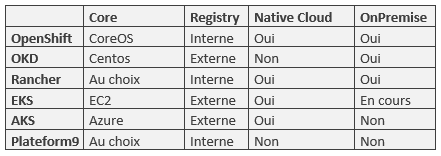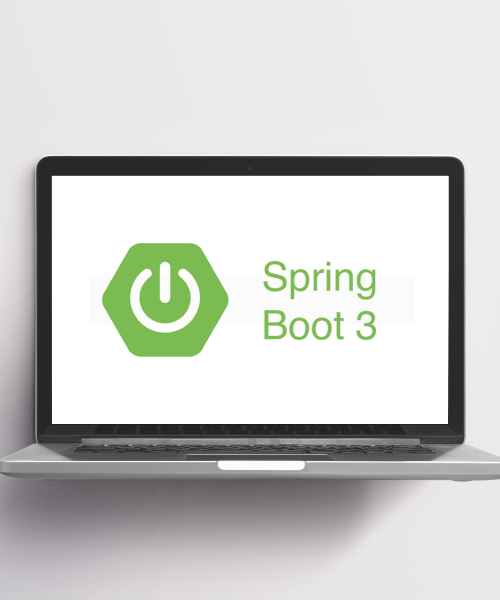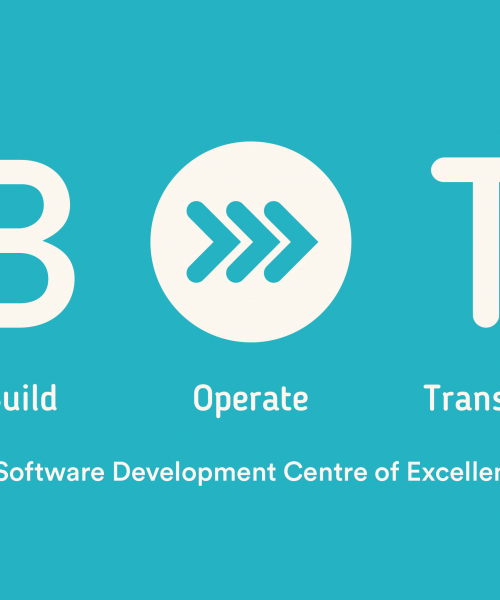In 2021, PaaS – Platform as a Service – will become a must-have for all organisations aiming for optimum production supported by a continuous improvement approach, i.e. operational excellence.
The PaaS enables to put the imperatives of a product at the heart of a business need, and to improve the involvement of all stakeholders. It delegates the infrastructure and platform to a convenience role.
Empowering teams to make the product evolve, while guaranteeing an improvement in quality is no longer an objective, but a reality. The right methodologies and tools are then used in order to meet a common goal defined by the business, and with an important link between the business and the execution.
Moving from a silo model to a self-service model allows for greater autonomy. We have seen a strong paradigm shift in recent years. Cloud players are disrupting the way applications are built with the promise of cost management efficiency.
Many companies have recognized through PaaS a solution to modernize their applications. From improved quality to more rational management of resources and costs, a whole area of software architecture has been revolutionised.
This revolution has gone through many stages. Microservice architecture, integration of a containerization strategy, Cloud, Managed Service, …
It is not the architecture that will decide the organization. And that’s why, if you want to modernize your application layer, you need to start with an organizational redesign. And starting with a decoupling of responsibilities allows you to obtain a stronger accountability of all the actors. Only through this approach can you benefit from the advantages of a modern, high-performance, anti-fragile software stack.
In order to implement a modern, scalable, microservice based, decoupled and high-performance architecture, it is necessary to start with an organizational redesign and decoupling of responsibilities.
Point of microservice, decoupled architecture or scalability without architectural redesign, organizational redesign, and decoupling of responsibilities.
With an evolution of solutions towards a PaaS strategy, it is necessary to have the tools, the teams and the vision to carry out a structural change within the company. This change is not insignificant, and requires a reflection on the production of value. The four models, On premise, IaaS, Paas and Saas are not opposed, but complement each other. Each proposal makes it possible to support the strategic business choice defining the position of value creation.
In this context, a tool such as Kubernetes, and even more so, Openshift and Rancher, allows to position oneself in the PaaS category. The focus is then devoted to business data and applications, which concentrate most of the value provided.
The SaaS case takes it one step further. In the context of more generic or common business, and not requiring specific adaptation, this mode allows to gain in efficiency thanks to a maturity of the solutions. However, it is important to be aware that this efficiency is eroded as soon as a business need is required that is not supported by default. Adaptations, which are often initially light, can prove to be a strong antipattern. Complexity of updates, diversion of the optimal path, unfortunate integration are as many business brakes that pollute the users without bringing strong competitive advantages.
The Positive Thinking Company acts as a companion for the PaaS solution, the solution that seems to us to have the best ratio of business efficiency and rapid gain for all stakeholders.
The proposal offered by an orchestrator allows for the separation of responsibilities by increasing the DevOps component and bringing teams closer together – See diagram. The platform is the core of the business, and it is managed by different CI/CD pipelines to have a complete automation.
In a context of DevOps transformation, the PaaS thus enables improved collaboration around a common goal. This is achieved through a continuous improvement process supported by the provision of a self-service orientation. With process automation and increased flexibility for developers, the platform guarantees increased stability and availability for everyone.
Orchestrator Overview: Choosing the Right Tool
There are several orchestrators, and several ways of looking at orchestration within one’s organization, which depends mainly on needs, but also on the underlying infrastructure, and the human investment required for its day-to-day operation and maintenance.
The main tools we will use for this test are:
- OpenShift (RedHat ) – OKD
- Rancher (1.6 et 2)
- Plateform9
- EKS (Amazon)
Different criteria are to be taken into account for the choice of a platform:


Conclusion
The use of a container orchestrator within your IT is not a benign choice, and requires your full attention, both in the way you implement it and in the support needed by the teams involved to derive substantial benefit from it.
Faster delivery is only one consequence, albeit a welcome one, of bringing teams together and the ability to isolate change and secure deployments.
An infrastructure such as that provided by OpenShift or Rancher thus gives developers confidence in their ability to deliver incremental changes. It gives confidence to Systems Engineers in the way the system is operated and the low impact of changes for increased stability. Finally, at the end of the chain, it also gives confidence back to the Business, which takes ownership of the tooling. An idea can thus be tested, delivered, withdrawn in a way that has little impact on the overall life cycle of the product. These successive iterations, fast, functional, and delivered, then increase the value of the tool, without sacrificing quality, and allows a constant adjustment of the objectives, without losing the overall mission.
It is possible, with the right support of the teams and the necessary tools, to give power back to the trades, freedom to the developers, and security to the infrastructure operators. However, the cost is not neutral, since it often requires a change in paradigms and mentalities, and requires restoring trust that may have deteriorated over time.









